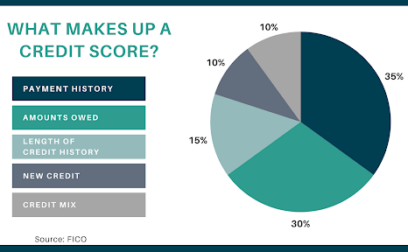TABLE OF CONTENTS
Page written by Chris Godfrey. Last reviewed on October 16, 2024. Next review due October 1, 2025.

There are more than 36,000 food truck businesses in the US and they sell everything from hot dogs and burgers to chop suey and spring rolls. Fast, mobile, and a staple at events, business parks, festivals and parties, food trucks have revolutionized the concept of eating out. But how do you start a food truck business and what hurdles do you have to climb? Let’s take a look under the cooker hood of these rolling restaurants:
Like most new ventures, getting a new food truck business up and moving takes time and good planning.
Before you even think about starting your food truck business, research these important factors:
Most importantly:
Few restaurants (and food trucks) can appeal to everyone. Instead, you’ll aim your business at a small segment of the people who live and work in the areas where you operate. Who are they? What is their price point? What expectations will you need to meet – for example, are you selling classic foods like burgers subs and salads to office workers, or will your truck give customers the chance to try something new – such as Peruvian or African cuisine? Knowing who your ideal customers are will help you shape your menu and narrow down the locations where you intend to work. (Which may also reduce the number of operating permits you must obtain).
Ultimately:
Make sure there is demand in your city for the food truck concept you’ll be selling. Is there a gap in the market you can fill? Will the local zoning regulations will allow you to operate successfully? Food trucks that score high provide cuisine that locals love and have favorite locations where they work. Can you create a concept that will generate a loyal fan base? Are there locations where you can operate with low competition from other food trucks and brick and mortar eateries?
If you’re seeking external investment or a commercial business loan to launch your food truck you’ll need a detailed business plan to support your pitch or application. Investors and lenders will want to know why you need their funds and what the money will do for your new venture. Business plans should do more than paint a rosy picture – explain the risks involved, what the downsides could be – and how you intend to overcome them.
Even if you don’t need investment or a loan, a business plan can still be a very useful vital tool. Use it as your business manual, referring to the contents to guide your strategy and manage your financials.
Find out more about creating your business plan here.
Restaurants and food businesses – including food trucks – are some of the most regulated organizations in the US. On top of strict health, hygiene and safety laws, food trucks will typically face further scrutiny due to their mobile nature. Every state, county, city and municipality will have their own regulations and zoning laws to govern food trucks, trailers and carts. As well as determining and meeting all these unique health and safety rules, you’ll need to check where you can lawfully park during operational hours and where you can store your truck in the off-hours. Keep in mind that if you plan to work across different jurisdictions, you may need multiple permits and licenses to operate.
Common permits and licenses that food trucks need:
It’s never too early to draw up your draft menu. The kind of food you sell will impact your costs, your marketing, your pricing and your profit margin.
Building a successful menu means more than just offering the same old classics. How can you make your truck’s menu stand out? Is it high-end ingredients such as wagyu beef? Is it a fusion of cuisines from around the world? Is it just a very short menu of solid cooking done to the very best? Keep in mind that your menu will be judged against similar competitors – and your food is the only way you can make a great impression on the folks who try your offering.
Your food truck is your kitchen, store and mobile advertising billboard. This means it is important to select one that will serve your business well. There are a few aspects to consider when choosing the vehicle that will become your food truck, such as the following:
Giving your truck a unique paint job and appearance can help you stand out from the crowd and make it easier for customers to remember you. Don’t forget to purchase insurance for your truck and business to cover any physical damage and liabilities that may occur. Once you acquire a food truck vehicle, you may need to finalize your inspections and permits in order to become street legal.
The equipment that goes inside your truck will depend on what food you sell. Additionally, if you’re buying a used food truck, some equipment will already be installed.
Typical equipment includes:
If you don’t have enough cash on hand to launch your food truck your own, you’ll need funds from investors or lenders. Many new business get started using financial support from friends and family, but if that’s not an option, there are networks of venture capitalists and angel investors readily available online. Bringing in external investment can give you the cash you need to get your food truck up and running but be aware that investors will usually want a piece of the action in exchange for their money. This means you will need to give up a share of your ownership and you may lose overall control of the business.
With a business loan you don’t have to surrender a share of your store to get the funds. Although it’s never easy for new businesses to borrow money, some lenders have special products and programs for startups and entrepreneurs. These types of financing include:
To get these types of loan you can approach banks, credit unions and online lenders one by one, or you can use the services of a loan marketplace that will immediately introduce you to a choice of loans from a range of lenders. Some marketplace platforms can also give you advice and help you with the application process. This can be especially useful for borrowers who have never taken out a business loan before.
Identify the ingredients and supplies needed for your menu and stock up. Keep in mind that bulk food suppliers may give you better pricing, but then you may need to pay a third-party storage and refrigeration service which could reduce your savings. Plan for a 10% inventory loss due to wastage or the spoilage of perishable food items.
It’s unlikely you’ll be able to cover all the bases yourself, which means you’ll need employees to make your food truck work. To keep a lid on costs you could bring in your head chef as a partner, making them a junior owner in the business and requiring a lower salary than they would if they were only an employee. Be aware that in many jurisdictions, as well as yourself, food truck employees need food safety training and their own licensed food handler’s badge.
As the old saying goes, advertising pays – and you’ll need to market your food truck to establish a solid customer base. Experts suggest allocating up to 20% of your operating budget to marketing activities in the first year of operation.
Before you start any kind of marketing activity, conduct some basic research – what are your competitors selling? What kind of loyalty programs do they offer? Are there any successful promotional tactics that you can mimic? Create a plan that promotes your brand and sets your truck apart from all the rest. Utilize a range of marketing actions to get your story across:
Before you go live with your shiny new food truck, you’ll want to run some tests to make sure everything works and to iron out any glitches. In the hospitality trade, these tests are called a ‘soft opening’ and you will usually invite friends, colleagues and contacts garnered from your business’ social media accounts to come and come kick the tires – for example, you could provide your truck for free – or at a major discount – to a local charity event, friend’s birthday bash, or a relative’s wedding.
The key objective is to get feedback – valuable business information that allows you to sort out any kitchen issues, finetune menus and tailor your pricing before you go out to the general public.
No two food trucks are the same, which means it’s hard to pin down the exact cost to start a food truck business. The city where you operate, the size, age, price and type of truck you use and how much you spend on marketing, plus many other variables will impact the cost to launch your business.
Some food truck owners get started with as little as $10,000, while others spend $250,000 on a business with all the bells and whistles. However, these are extremes. In most cases you should budget for an initial expenditure of $70,000 to $130,000.
Pros:
Cons:
No matter if you’re launching a brand-new food truck, or you’re buying an established business, chances are you’ll need finance to make your operation grow. Funding is where Swoop can really help. Contact us to discuss your borrowing needs, get help with loan applications and to compare high-quality business loans from a choice of lenders. Put your food truck in the fast lane. Register with Swoop today.
Written by
Chris is a freelance copywriter and content creator. He has been active in the marketing, advertising, and publishing industries for more than twenty-five years. Writing for Wells Fargo Bank, Visa, Experian, Ebay, Flywire, insurers and pension funds, his words have appeared online and in print to inform, entertain and explain the complex world of US consumer and business finance.
Swoop promise
At Swoop we want to make it easy for SMEs to understand the sometimes overwhelming world of business finance and insurance. Our goal is simple – to distill complex topics, unravel jargon, offer transparent and impartial information, and empower businesses to make smart financial decisions with confidence.
Find out more about Swoop’s editorial principles by reading our editorial policy.
Related pages
Join the 70,000+ businesses just like yours getting the Swoop newsletter.
Free. No spam. Opt out whenever you like.
Suite 42, 4th Floor, Oriel Chambers, 14 Water Street, Liverpool, L2 8TD
View in Google MapsKingfisher Way, Silverlink Business Park, Newcastle upon Tyne, NE28 9NX, UK
View in Google MapsSuite 105A, Airivo, 18 Bennetts Hill, Birmingham, B2 5QJ
View in Google MapsAberystwyth Innovation and Enterprise Campus
Gogerddan Campus
Aberystwyth University
Ceredigion
SY23 3EE
Dogpatch Labs, The CHQ Building, Custom House Quay, Dublin, Ireland
View in Google MapsSuite 801, Level 8, 84 Pitt Street, Sydney, NSW 2000, Australia
View in Google Maps43 W 23rd St, New York, NY 10010, United States
View in Google Maps21 Dreyer Street, Cape Town, South Africa, 7708
View in Google MapsClever finance tips and the latest news
delivered to your inbox, every week
Join the 70,000+ businesses just like yours getting the Swoop newsletter. Free. No spam. Opt out whenever you like.




